Easy Sourdough Bagels [instructions for discard + overnight]
This post may contain affiliate links.
These easy sourdough bagels can be made using discard and will have you wondering why you haven't made them before!
Trust me, you'll never buy them from the store again - especially if you make a double batch and stash half in the freezer.
You can personalise these easy sourdough bagels by topping them with your favorite seeds and seasonings or you might like to try these sourdough pumpkin bagels, jalapeño cheddar sourdough bagels, sourdough rye bagels, cinnamon raisin sourdough bagels or these sourdough egg bagels! And if you love things bite sized don't miss these sourdough discard bagel bites with honey cream cheese dip!
Get your sourdough starter ready ... because you are going to want to make these immediately!
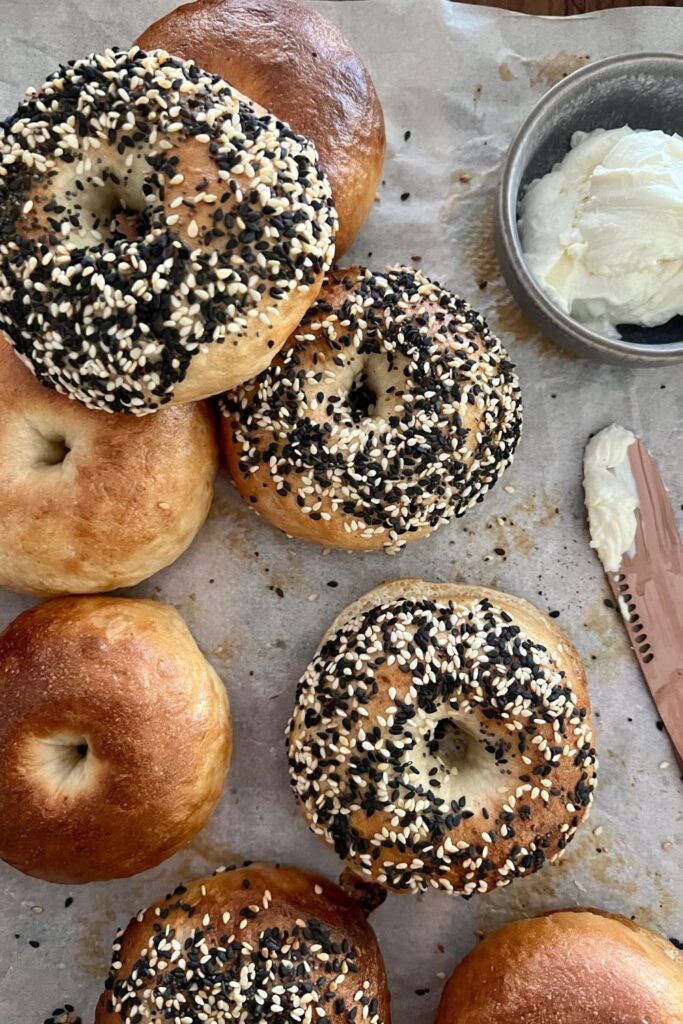
What Makes A Good Bagel?
Made famous in New York, bagels are a Jewish food which translated in German mean "bracelet".
The defining factors of a bagel, in comparison to other breakfast rolls, are that it has a chewy crust, a hole in the middle and a rather dense crumb.
A good bagel will have a distinctive crust - not crunchy, but glossy and chewy. The crumb is soft, but dense and chewy.
They are not traditionally made with eggs or sugar, but rather water and malt. But in more modern times anything goes - and you'll find bagels made with eggs, sugar, milk and a myriad of flavors to boot.
Bagels can be made with a flavored dough, but are more often than not sprinkled with seeds or salt - poppy seeds, sesame seeds and of course "everything bagel seasoning" being the most popular (you've got to try making it yourself with this homemade Everything Bagel recipe).
You can read more about the history of bagels here.
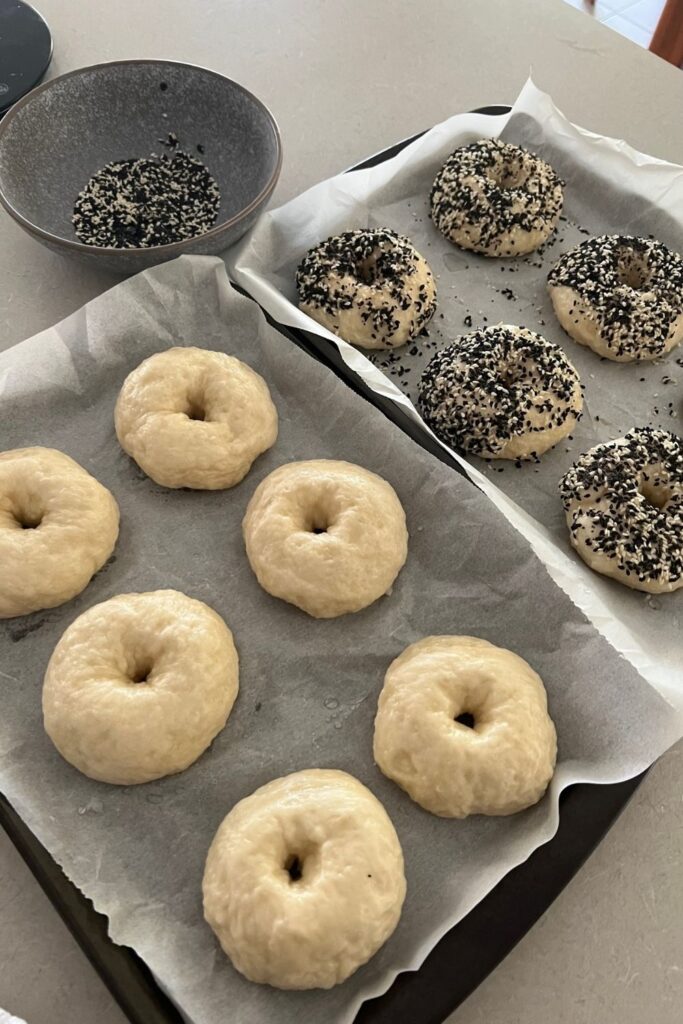
How To Make Sourdough Bagels
Making sourdough bagels is incredibly easy!
It's a lower hydration dough which is really easy to work with.
Using a stand mixer makes the kneading easy and I highly recommend doing this.
Here's how to make sourdough bagels:
- Add sourdough starter (discard), water, flour, sugar, yeast (if using) and salt to the bowl of your stand mixer and bring together to form a shaggy dough.
- Allow the dough to rest for around 15 minutes.
- Knead the dough (you'll need to use a dough hook for stand mixers) for around 10 minutes until it is smooth and supple. This is a stiff dough (much like sandwich bread dough) so it won't be super elastic, however it should be smooth and not sticky.
- Once the dough is sufficiently kneaded, you'll need to allow it to rise or ferment.You want the dough to double and be puffy and soft.
- Once the dough has risen, you'll need to shape the bagels. It's quite simple, you just need a little patience.Divide the dough into 12 pieces weighing 80g each. Shape each piece of dough into a small ball.
- Take each ball and poke a hole in the middle. Gently stretch the hole out and then place each bagel on a sheet of baking paper to rise.
- Cover the bagels with a dish cloth and allow them become lovely and puffy.
- While they are puffing up, bring a pot of water with 40g of honey added to the boil and preheat your oven to 200C/392F.
- When the water is boiling, carefully place 3-4 bagels into the boiling water at a time. You want to boil them for around 30 seconds each. They should float to the surface and that's when you know to take them out.If you prefer really chewy bagels, boil them for up to 2 minutes each.
- Carefully remove the bagels from the boiling water using a slotted spoon.If you want to add seeds or seasonings, dip the wet bagel into the seeds/seasonings before placing on a baking tray. You can leave them plain if you wish. I like to do a mix of seeded and plain.
- Bake the bagels for around 20 - 25 minutes at 200C/392F. Remove them from the oven when they are golden brown.
- Allow them to cool before you enjoy them!
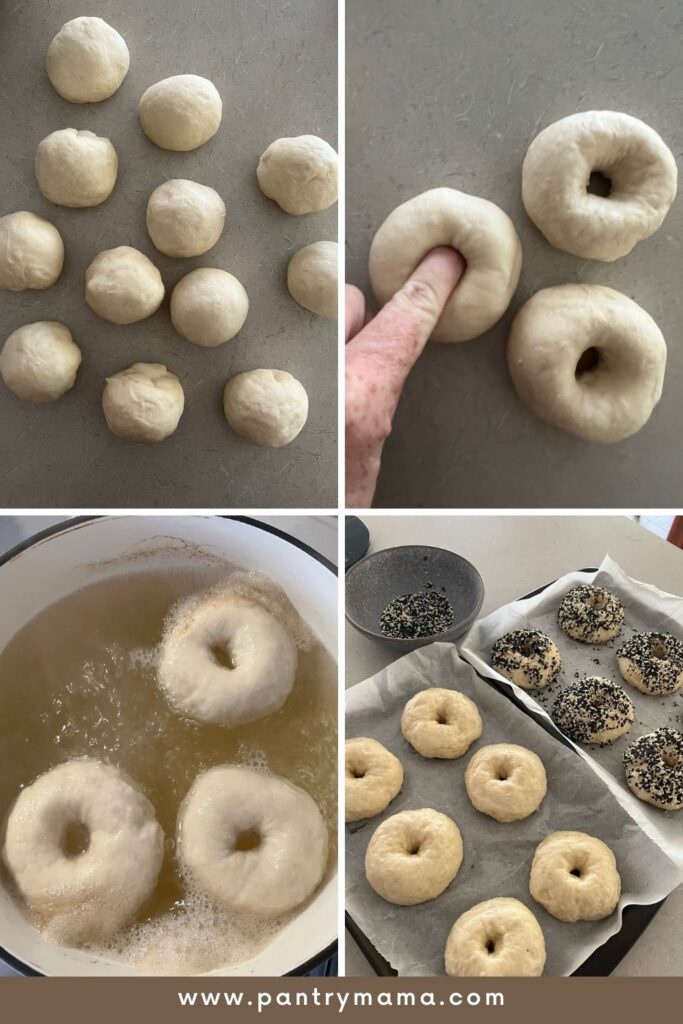
Video on How To Shape Sourdough Bagels
Are Bagels Sourdough Normally?
Traditional bagels are not sourdough. They are made using commercial yeast.
Bagels can easily be made using a sourdough starter however, because the commercial yeast is simply replaced by the yeast in a sourdough starter.
Bagels using commercial yeast are normally allowed to rise very slowly to give them that distinct flavor and texture.
Bagels are traditionally a lean dough, but if you prefer egg bagels, try this easy Sourdough Egg Bagel recipe.
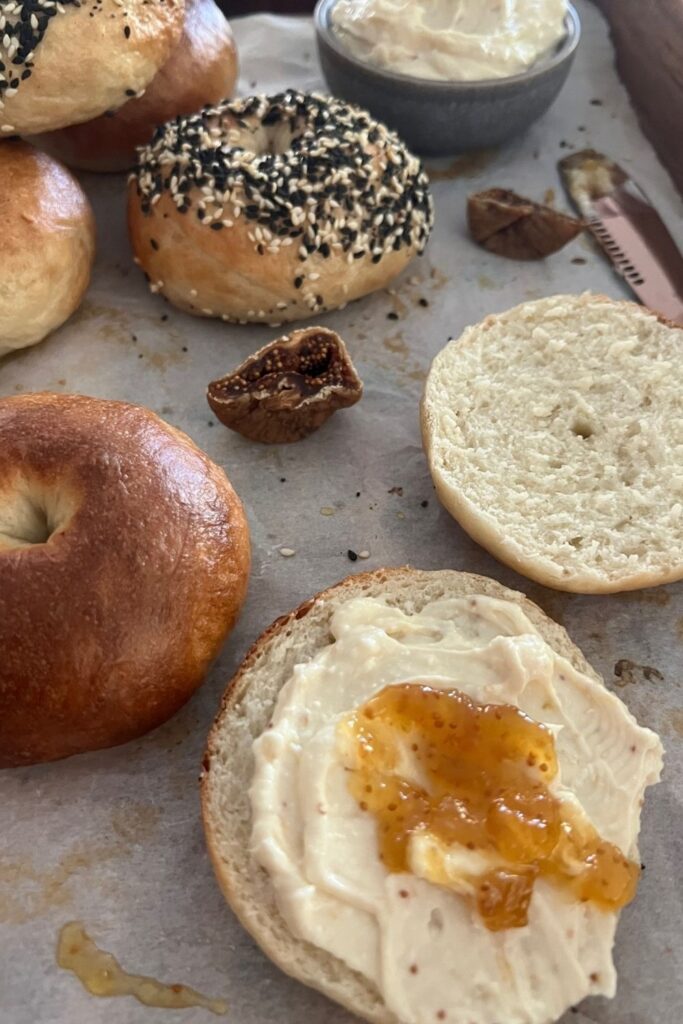
Discard or Starter?
You can make these sourdough bagels using discard or fed starter.
I love making them with fed, bubbly starter and leaving the to bulk ferment on the counter overnight. It gives them such a lovely, distinct sourdough flavor.
If you would like to use discard, I recommend adding just a pinch of yeast, particularly if you're still in the establishment stage of your sourdough starter.
This means you can still leave them on the counter overnight if you want to.
Adding more than a pinch of commercial yeast will make them rise much faster - and this is good if you need them in a hurry (tell me it's not just me that wakes up craving bagels for breakfast?).
So there's a few options I've given - and I've put them in a little table to make it easier to understand:
| Starter | Yeast | Bulk Ferment |
| Fed, Active Sourdough Starter | No | Overnight (or until the dough has doubled). |
| Sourdough Discard | Pinch | Overnight (or until the dough has doubled). |
| Sourdough Discard | Up to 7g | Around 1-2 hours (or until the dough has doubled). |
If you're confused about the difference between sourdough starter and discard, you'll find a full explanation of sourdough discard here.
Why Do You Boil Sourdough Bagels?
Sourdough bagels are different from other types of rolls because they are boiled in water before being baked in the oven.
They can be boiled in plain water or water with baking soda, lye, malt syrup or honey added.
I find they taste best when boiled in honey water. The honey gives them the most lovely golden crust once baked.
The boiling of the bagels sets the crust and gives them their signature chewiness. The longer you boil them, the chewier the crust will be.
They will look a little lumpy and bumpy after boiling. This is normal and they will still bake as per normal.
Once they are boiled, you can dip them in any seeds you'd like to top them with.
The boiled bagels will be wet and a little sticky so the seeds will stick to them.
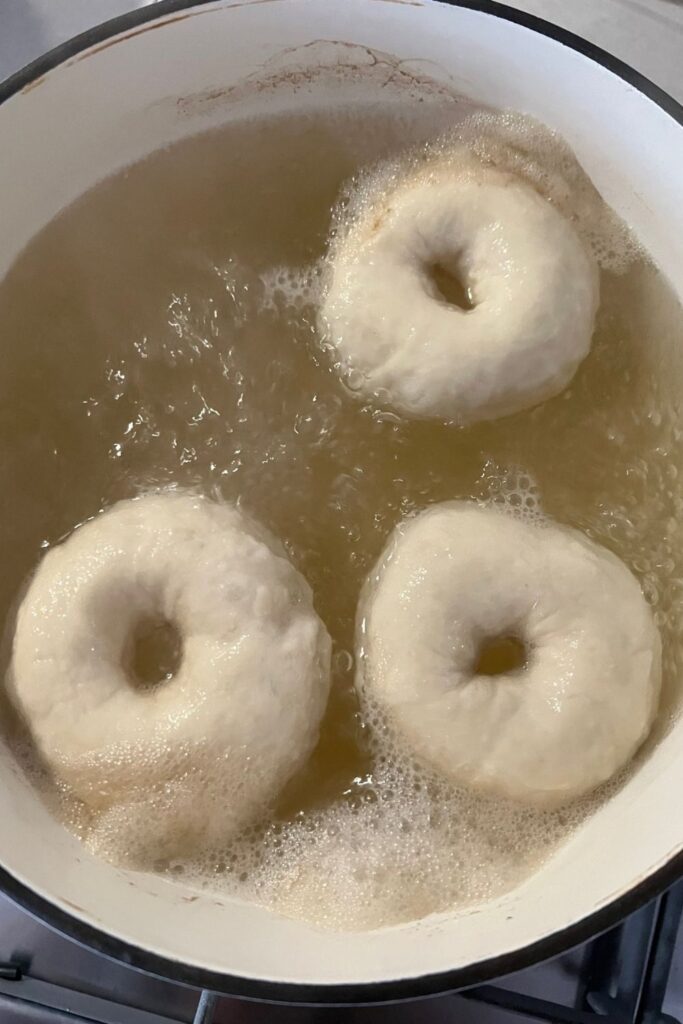
Do You Have To Use A Stand Mixer?
I highly recommend using a stand mixer for sourdough bagel dough.
It's quite low hydration and is a stiffer dough than a regular sourdough bread.
I mix this dough in a Thermomix and use the knead function for around 3 to 4 minutes.
If you are using a regular stand mixer with a dough hook, 5 to 10 minutes at speed 2 will get the dough mixed. Just remember to give the machine a break every 2 minutes to protect the motor.
You can knead this dough by hand but it will take lots of muscles to get the dough worked through. But it's definitely doable!
Whatever you do - do not add extra water to the dough as this can make the dough too soft and you will not be able to shape the bagels correctly.
Timeline for Sourdough Bagels
It's really good to have a timeline worked out for baking sourdough bagels - so that you can have them baked fresh for breakfast.
It can be overwhelming to schedule sourdough, so here's the timetable I work to when making these for breakfast. Remember this is an example only!
DAY 1
Lunchtime - feed sourdough starter.
7pm - mix the bagel dough and set aside to ferment overnight.
DAY 2
6am - shape sourdough bagels and set aside to get puffy.
7.30am - preheat oven and put on pot of boiling water.
7.45am - boil bagels and then into the oven by 8am
Using this timetable, you could be eating warm bagels by 8.30am!
If you are using discard with a little yeast, this timetable will still work - just make sure it's literally just a pinch or they will over ferment overnight.
You'll find a full guide to creating sourdough baking timetables here.
How To Eat Sourdough Bagels
Bagels can be enjoyed with both sweet and savory toppings. You can pretty much put anything you like on a bagel.
Traditionally they are eaten with cream cheese or lox - but these days, pretty much anything goes!
Some of the most delicious toppings for your bagels include:
- Cream cheese, deli ham and sliced tomato with lashings of black pepper.
- Smoked salmon, cucumber and cream cheese topped with some fresh dill.
- Seeded bagels are delicious with this whipped garlic and herb butter.
- Plain bagels work well with this cream cheese fig spread (seriously yummy) or this cultured butter.
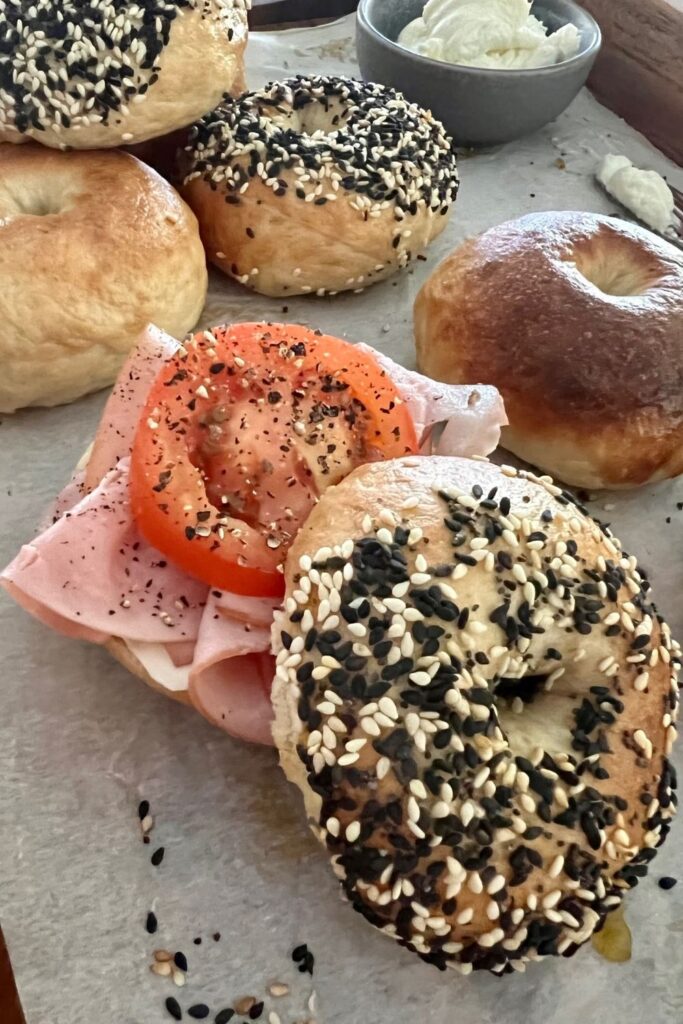
How To Store Sourdough Bagels
Sourdough bagels are best eaten fresh. Allow them to cool a little and then slice them open.
They should be consumed within 12 hours of baking for the best crust and crumb experience.
They do freeze well. I use a large ziploc bag and place the bagels in. You can then remove them as you need.
Allow them to defrost completely before toasting or warming slightly in the microwave.
Frequently Asked Questions
Flat sourdough bagels are generally a result of under fermentation or under proofing. This means you haven't allowed the sourdough starter or yeast to fully rise the dough which means they won't puffy up properly when you bake them. They will dense and much more chewy than they should be. The solution for this is to allow the bagels plenty of time to rise, particularly after shaping.
Bagels are often boiled in honey, sugar or even malt syrup. All of these ingredients are high in sugar. Bagels are then placed onto a baking tray where the bottom is in contact with the tray. As they are quite small, bagels don't take long to bake and the extra sugar sitting on the crust can cause premature browning. Just keep an eye on your bagels while baking to ensure you can turn the temperature down if necessary.
No you can't over knead bagel dough, particularly because bagel dough is generally very low in hydration which means you really do need to work the dough hard to ensure it's fully combined and the gluten network develops sufficiently.
Want More Recipes?
Need more sourdough breakfast recipes? Why not try some of these ideas:
- Sourdough Egg Bagels
- Soft Sourdough Pretzels
- No Wait Sourdough Waffles
- Sourdough English Muffins
- Easy Sourdough Granola
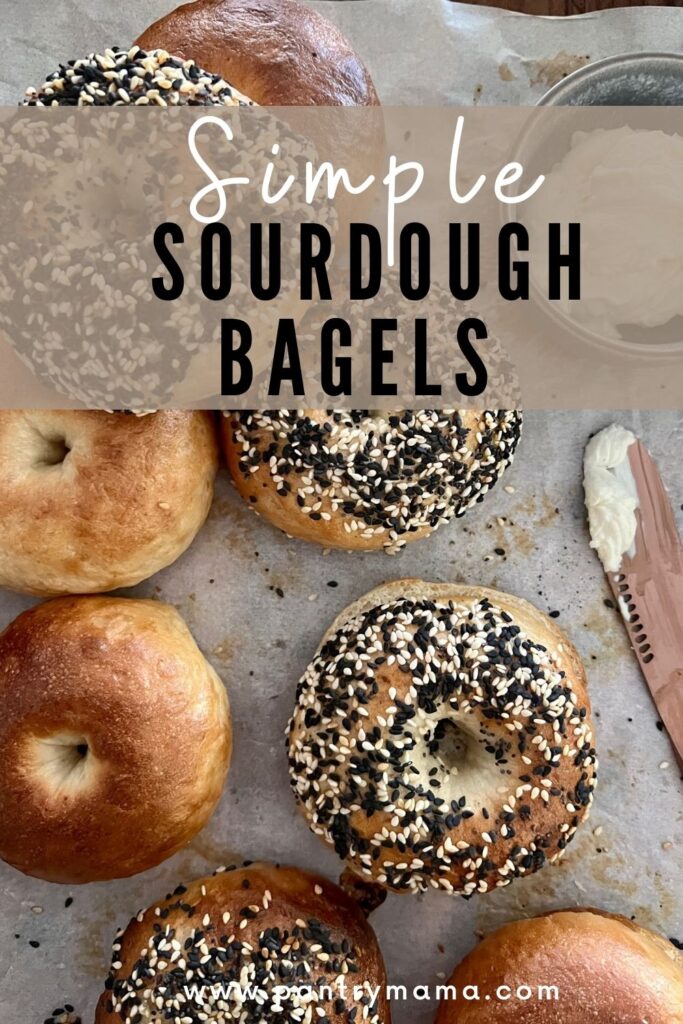

Sourdough Discard Bagels Recipe
Equipment
- Stand Mixer recommended
- Baking Trays
- Stock Pot for boiling bagels
- Slotted Spoon
Ingredients
- 100 g Sourdough Starter can be discard or fed and bubbly
- 500 g Bread Flour
- 250 g Water Warm
- pinch Instant Yeast if using sourdough discard
- 30 g Sugar
- 10 g Salt
For Boiling
- 2 Litres Water
- 40 g Honey
Instructions
- I recommend using a stand mixer for this recipe as it is a stiff dough and can easily be kneaded in a stand mixer.Add sourdough starter (discard), water, flour, sugar, yeast (if using) and salt to the bowl of your stand mixer and bring together to form a shaggy dough (you can use the paddle for this part).If using a Thermomix, just knead the ingredients for 30 seconds til it forms a shaggy dough.
- Allow the dough to rest for around 15 minutes.
- Knead the dough (you'll need to use a dough hook for stand mixers) for around 10 minutes until it is smooth and supple. This is a stiff dough (much like sandwich bread dough) so it won't be super elastic, however it should be smooth and not sticky. Remember to give the stand mixer a break every few minutes.If using a Thermomix, knead the dough for up to 4 minutes.
- Once the dough is sufficiently kneaded, you'll need to allow it to rise or ferment.You want the dough to double and be puffy and soft.
- Once the dough has risen, you'll need to shape the bagels. It's quite simple, you just need a little patience.Divide the dough into 12 pieces weighing 80g each. Shape each piece of dough into a small ball.

- Take each ball and poke a hole in the middle. Gently stretch the hole out and then place each bagel on a sheet of baking paper to rise.

- Cover the bagels with a dish cloth and allow them become lovely and puffy.

- While they are puffing up, bring a pot of water with 40g of honey added to the boil and preheat your oven to 200C/392F.
- When the water is boiling, carefully place 3-4 bagels into the boiling water at a time. You want to boil them for around 30 seconds each. They should float to the surface and that's when you know to take them out.If you prefer really chewy bagels, boil them for up to 2 minutes each.

- Carefully remove the bagels from the boiling water using a slotted spoon.If you want to add seeds or seasonings, dip the wet bagel into the seeds/seasonings before placing on a baking tray.You can leave them plain if you wish. I like to do a mix of seeded and plain.

- Bake the bagels for around 20 - 25 minutes at 200C/392F. Remove them from the oven when they are golden brown.
- Allow them to cool before you enjoy them!










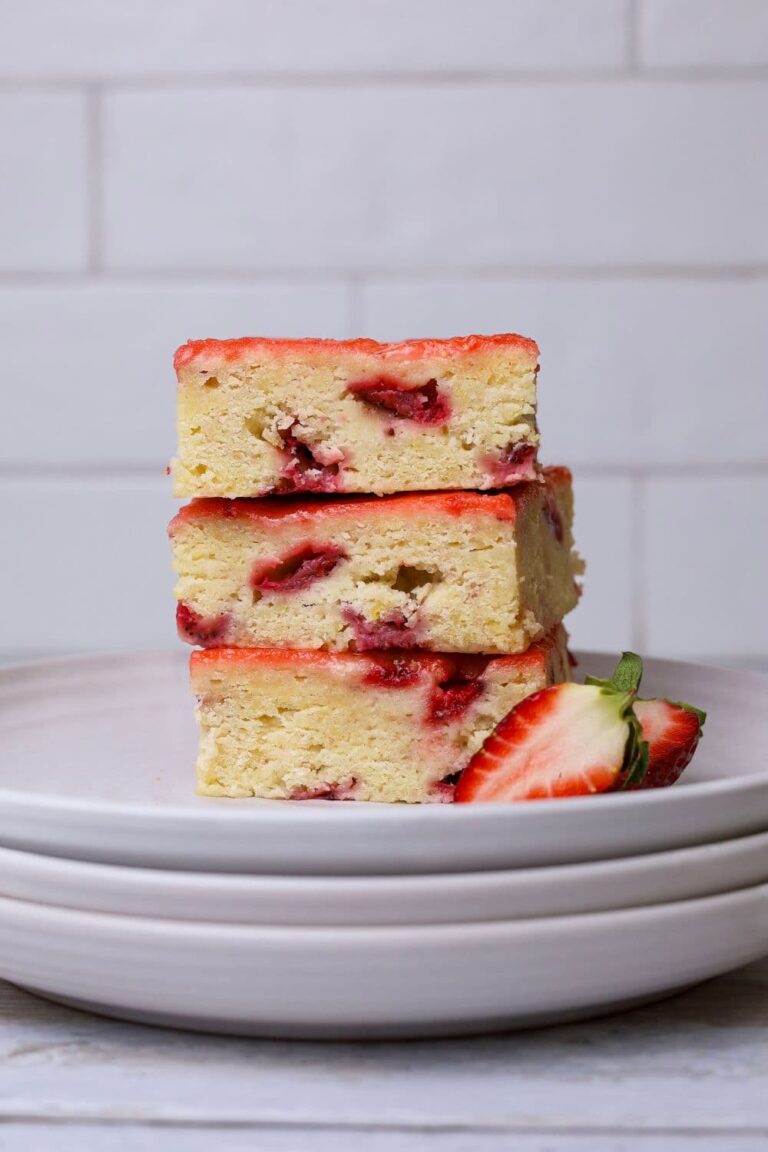
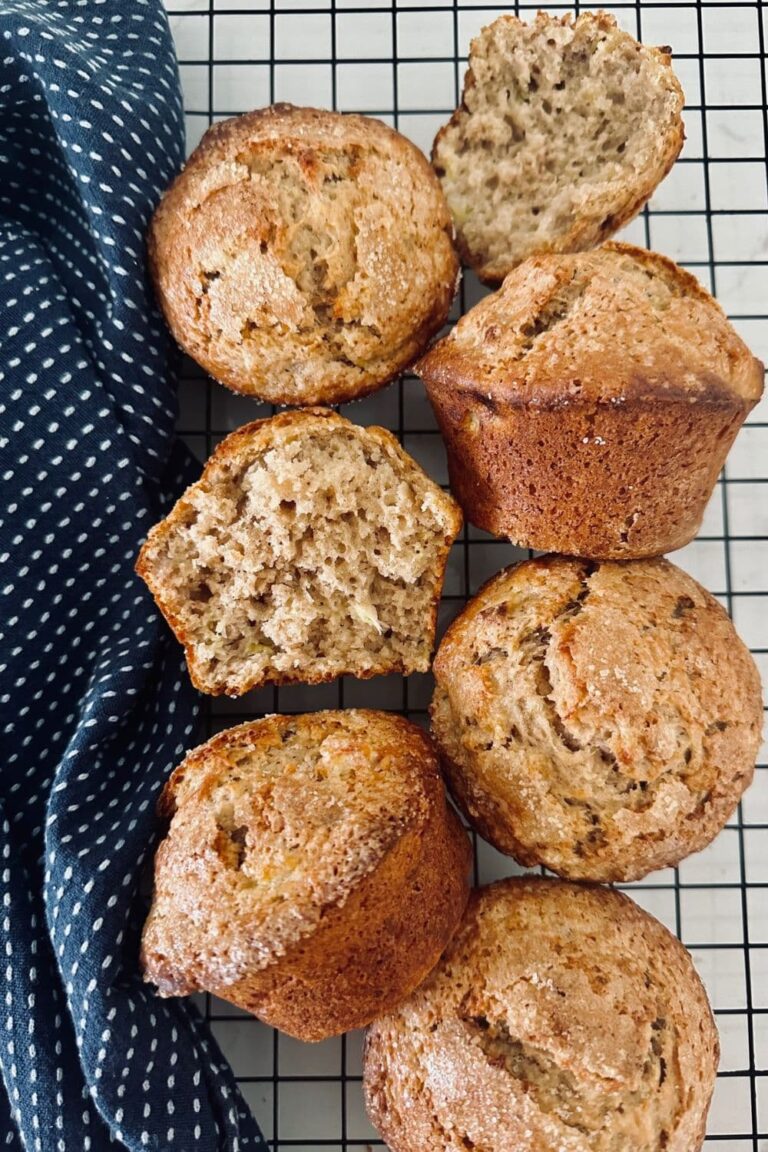


How do you get the sticky, puffy bagels off the sheet and into the water without deflating?
They shouldn't be too sticky, but you can turn them over on the sheet prior to placing in the water. This helps a bit. Kate shows this process in this YouTube video around 4:45 if you would like a visual. 🙂
This isn't a problem I've had, however I would recommend spraying the parchment paper with a little olive oil before you put the bagels down to prevent them sticking 🙂
I got a stand mixer that couldn't stand up to bagel dough so I returned it. Now I use my bread maker dough cycle & it does great. These bagels are delicious! They freeze well & don't lose their goodness. I get a few out the night before for our breakfast & are never disappointed!
This is the best Bagel recipe ever. Easy and I will never buy another store bought bagel.
Thank you, Frances! That's so great to hear!
I'm sure the recipe deserves more stars. I think the fault is mine. The dough was great and rose perfectly. The bagel shaping was easy and they looked good. They puffed nicely but when I put them in the water they flattened out. I'm wondering if I handled them too much trying to get them into the water. They did stick to the parchment and I think maybe they deflated just by my getting them off. Any ideas?
It's hard to say exactly, but the deflating could have been from getting them off the parchment. If you used an inexpensive parchment paper, that could be the reason for the sticking. Possibly a bit of oil may help next time. 🙂 Thanks so much for your review.
These come out perfectly every time!
Thank you Pantry Mama! These bagels were absolutely perfect. I made the sourdough version. I was a little concerned my dough did not appear to double but the end product was amazing. Your recipes never disappoint!
This was a fabulous recipe! Thank you so much! I did mine in the stand mixer with 7 grams of yeast. Everyone loved them. Thank you again!
Love your bagel recipes, I’ve tried making those with eggs n without. Love your detailed and clear instructions and tips that promised me success in the process!
Most of all, those who tried them, love them ! Thanks again !
First time making this recipe. I forgot to let the dough rest for 15 minutes before kneading…oops. Will it affect the results?
No it won't affect the results 🙂
I love sunflower seed bagels so decided to try mixing in some sunflower seeds about mid way through kneading. I incorporated by hand and returned to the mixer to finish up the kneading. They look a bit wonky because it was my first time making bagels, but they are perfectly delicious. Made exactly 12.
I love these so do my kids! could these fo through a cold ferment? if so at what stage?
You can cold ferment these after shaping 🙂 I'm so glad you all love the recipe 🙂
This recipe is perfection! Fool proof if you follow it and the result is beautiful